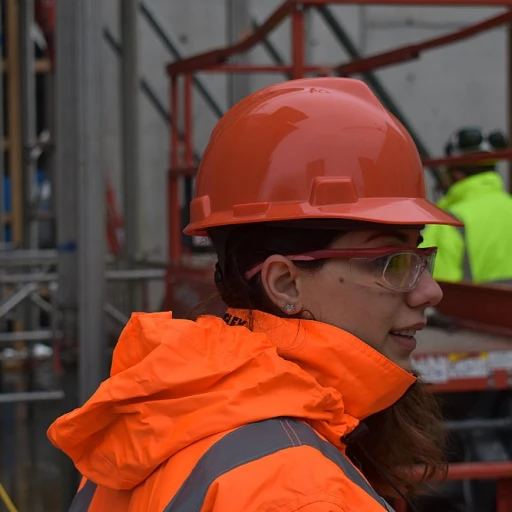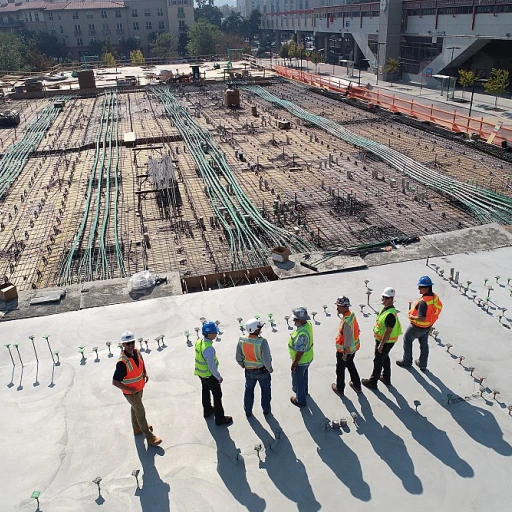
Understanding Talent Review
Gaining Clarity on Talent Review Processes
In today’s dynamic business environment, a rigorous approach to evaluating employees becomes increasingly imperative. Talent reviews serve as an essential tool to help organizations assess their workforce's potential and performance. But what exactly is a talent review? A talent review is a systematic process aimed at evaluating the performance potential of employees. It involves in-depth discussions among managers and HR leaders to identify high performers and those with high potential within the team. This exercise not only aids in determining the current role strength of employees but also assists in succession planning and identifying future leaders. Review processes often include a well-structured framework, sometimes called a box grid or grid template, which distinguishes employees in categories like high potential and low potential. Data gathered during these reviews informs decisions on talent management strategies and enables leadership teams to foster employee development and engagement. Conducting talent reviews is not merely about assessing current capabilities. It is also essential for the development of potential employees. By consistently engaging in these reviews, businesses can better tailor their performance management and ensure that managers have a clear understanding of their team's dynamics, effectively aligning talent potential with organizational goals. As part of a broader HR leadership approach, these reviews are an indispensable part of enhancing workforce potential. For more insights on capacity planning and its significance, explore this link.Key Components of an Effective Talent Review Process
Core Elements of a Successful Talent Review
In the realm of human resources, the talent review process is a cornerstone for identifying and nurturing high potential employees. This process is not just about assessing current performance but also about forecasting future leadership capabilities. Here are some key components that make an effective talent review process:
- Performance and Potential Assessment: A dual focus on performance and potential is crucial. Using a box grid or 9-box talent grid, HR leaders can categorize employees based on their current role performance and future potential. This helps in identifying high performers who are ready for leadership roles.
- Data-Driven Insights: Leveraging data is essential for an objective review. Performance management systems can provide valuable insights into employee engagement and development needs, aiding in more accurate assessments.
- Leadership Team Involvement: Engaging the leadership team in the review process ensures alignment with business goals. Their insights can help in succession planning and identifying future leaders.
- Regular Reviews: Conducting talent reviews on a regular basis allows for timely identification of potential employees who can be groomed for higher responsibilities. This ongoing process supports continuous development and readiness for succession.
- Development Plans: Post-review, creating personalized development plans for employees is vital. These plans should focus on enhancing skills and preparing them for future roles within the organization.
For more insights on enhancing workplace communication, which is integral to a successful talent review process, explore effective communication tools every CHRO should know.
Challenges in Implementing Talent Review
Overcoming Obstacles in the Talent Review Journey
The journey of implementing an effective talent review process comes with its own set of challenges. Despite its potential to significantly enhance performance management and succession planning, organizations often face obstacles that can hinder the seamless execution of talent reviews. One of the primary challenges is ensuring the objectivity and consistency of the reviews. Leaders and managers might inadvertently allow personal biases to affect their evaluation of employees' performance and potential. This can lead to skewed data and inaccurate assessments. To mitigate this, it’s crucial to establish standardized criteria and utilize a "box grid" template to provide a structured framework. This approach assists in evaluating both current performance and potential, helping to identify high performers and potential employees fairly. Another significant hurdle is the alignment of the talent review process with the overall business strategy. It’s essential that the reviews resonate with the organization's core objectives and do not operate in isolation. Business leaders must be actively involved to ensure cohesion between management levels and the strategic goals of the company. Time constraints and resource allocation also pose difficulties. The process requires considerable time investment from both HR teams and leadership teams. It demands preparation, execution, and follow-up phases, which can strain resources if not managed efficiently. Implementing best practices and leveraging technology can help streamline the process and maintain employee engagement throughout the reviews. In addressing these challenges, technology plays a crucial role. Software solutions assist in gathering and analyzing performance potential data, offering insights that would otherwise be difficult to obtain manually. Automation can aid managers in tracking progress and streamline the developmental needs of employees. Lastly, communication barriers can also be an impediment. An effective review process is reliant on open dialogue and feedback. Managers need to communicate the outcomes clearly to their teams, ensuring transparency and fostering a culture of continuous development. This open communication also aids in motivating employees to embrace their development journey, encouraging them to reach their high potential. Navigating these challenges is vital in enhancing the talent review's effectiveness, thereby strengthening the potential of your workforce. Organizations that address these issues proactively can ensure the sustainability of their talent management efforts. For more insights on overcoming common HR challenges, explore this guide on fractional HR leadership.The Role of Technology in Talent Review
Embracing Digital Tools for Enhanced Talent Review
In today’s digital age, leveraging technology is essential for optimizing talent review processes. With the right tools, organizations can efficiently assess the performance and potential of their employees, which can substantially aid performance management and enhance overall employee engagement. Implementing software that provides a clear box talent review, also known as box grid, helps leaders easily visualize the current role and future potential of each team member. This grid template maps employees across different dimensions, such as high performers and low potential, making it a valuable tool for talent management. Technology streamlines data collection and analysis, reducing the manual workload for HR managers. Through automated systems, performance data is aggregated from various sources, providing a holistic view of employee performance and potential. This efficiency is crucial for identifying high potential employees who may be future leaders, and aligning them with succession planning needs. Furthermore, digital solutions offer real-time feedback and progress tracking over multiple review periods. This dynamic approach supports ongoing development and aligns with best practices in talent reviews. Leaders can thus make informed decisions based on current, comprehensive information, ensuring the process remains aligned with business objectives. In summary, integrating digital tools into the talent review process not only simplifies data management but also fosters a culture of continuous improvement and strategic employee development.Best Practices for Conducting Talent Reviews
Optimizing the Talent Review Process
Conducting effective talent reviews requires alignment with best practices that can drive both organizational growth and employee development. Leveraging these practices ensures that talent management strategies are not only efficient but also result in meaningful outcomes for all parties involved.- Set Clear Objectives: Begin with a clear understanding of why the talent review process is being implemented. Is it to identify high potential employees, or to enhance succession planning efforts for high performance roles? Clearly defined objectives guide the process and provide a framework for evaluating success.
- Involve the Right Stakeholders: Engaging the leadership team, managers, and potential employees ensures that various perspectives are taken into account. Having diverse inputs helps reveal potential team leaders and supports succession of roles efficiently.
- Utilize Data-Driven Insights: Data is crucial to understanding both the current performance and future potential of your workforce. Use a performance potential grid or box grid to map and assess employee capabilities. This grid template can help identify high performers who are ready to take on leadership roles.
- Implement Continual Feedback and Development: Regular reviews and feedback loops allow for real-time performance management. Continuous development opportunities such as training sessions help maintain employee engagement and readiness for future roles.
- Ensure Transparency: Keep the review process open and transparent to build trust among employees. Clearly communicate how decisions are made, from recognizing employee strengths to aligning challenges with development plans.
- Adjust and Adapt: The business environment and employee aspirations can change, so it's important to keep reassessing the review process. Regular evaluations will help the talent review process remain relevant and effective in identifying future leaders.












